The benefits and key design concepts behind minimalist interior design including design tips, ideas, color choices, furniture choices, and decorative accents.
Minimalist design has been interpreted in various ways over the years but its basic essence is to reduce the space or look to only the most essential elements. This minimalist approach is simple and elegant and can be applied in multifarious situations, from furniture to accessories, with great results. Here we take a look at minimalist interior design ideas as well as some related interior design concepts such as color schemes, furniture, and minimalist designs.
I’ll also walk through some of the key concepts of minimalist design as well as how to put together a minimalist home with easy-to-follow steps from start to finish. This article will also explore some of the key concepts behind minimalist interior design and offer specific tips on how you can create your own beautiful minimalist spaces in your home today!
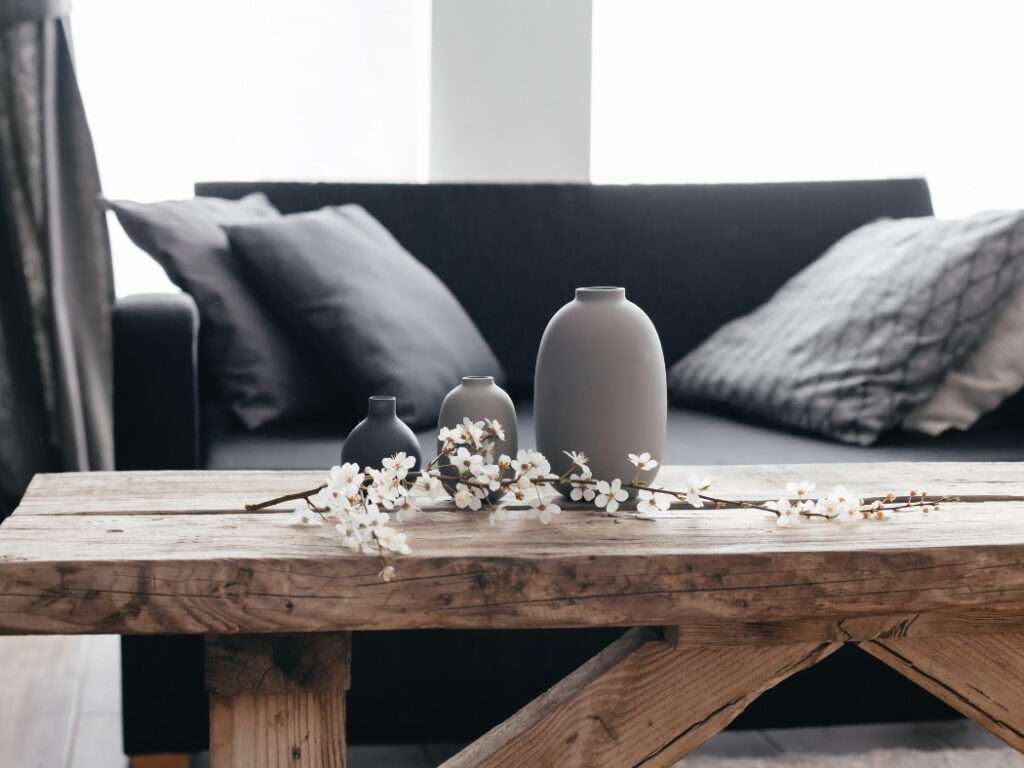
While minimalist design can be applied to any space, it is most commonly found in modern homes and office designs. The benefits of minimalist interior design include simplified organization (it’s easier to find things), open spaces that are easy to clean and air out (cleaning won’t take as long!), a sense of simplicity that allows for contrast with accent pieces or artwork, and a significant reduction in clutter.
Minimalist designs often use monochromatic color schemes which feature one dominant color such as white paired with black accents. These colors create an elegant look that goes well with both contemporary styles but also more classic furniture types such as antique mahogany desks or even Victorian sofas. As they say: the best kind of minimalist decor comes back to what you know!
Tips For Achieving Dramatic Minimalist Interior Design
Simple line drawings are often popular choices for minimalist interiors because they have few elements which look very striking against walls. Simple yet elegant metal wall art and geometric contemporary tapestry wall hangings also make great additions to minimalist styled homes.
Minimalist designs are one of the most popular decorating styles because they’re easy to maintain, affordable, and eye-catching.
For example, you can create a minimalist bedroom by using neutral tones for your bedding sheets in order to match everything else in the room. That includes the walls, furniture pieces, and other decorations such as artwork or tapestry wall hangings.
When it comes to patterns, keep them simple and to a minimum- such as stripes, geometric designs, simple flowers, or even polka dots. remember less is more!
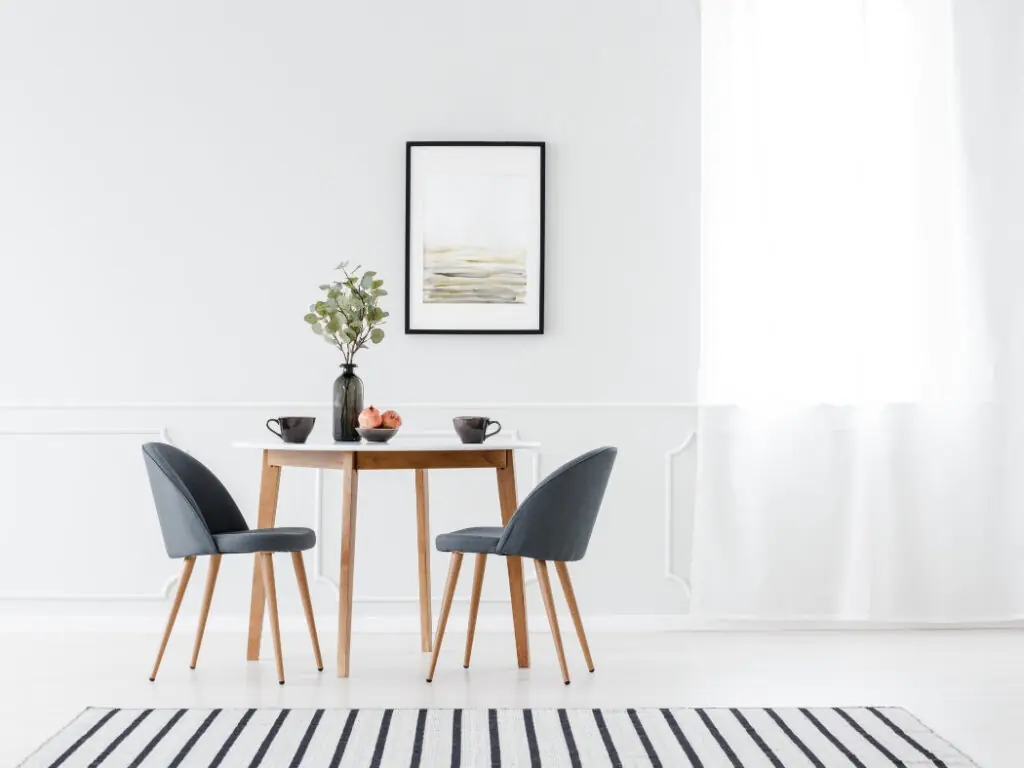
It’s all about the feeling of open space, open light, and a refreshing atmosphere to make your place feel like home. When it comes to furniture choices for minimalist interior decorating or designing your own space from scratch, you’ll want low-profile pieces that fit in with the general theme of minimalism.
That means avoiding large pieces such as armoires in favor of sleek dressers instead. You can also use glass tables so there are fewer visual breaks in your furniture lines. But remember to keep the clutter to a minimum (you’re probably starting to sense a theme here).
This minimalist style only works if there are very few interruptions in the furniture lines, so your minimalist interior design may be about removing any large pieces such as armoires or bookshelves from the equation (sorry Grandma). The key here is simplicity – keep things simple with sleek dressers or low profile tables instead and try not to add much more than a throw rug.
It is important to remember that when you’re trying to create an airy and spacious look without lots of clutter (there’s that word again) or extraneous decor items.
Don’t get me wrong. I LOVE decor items. If I didn’t, it would be pretty silly of me to have created this site! But sometimes, decor can overtake a room rather than adding to it. And there risk of that is far lower with a minimalist decor style.
The Benefits of Minimalist Interior Design
Minimalism is also known as being part of the “zen” decor concept in Japanese homes. With this interior design style, you don’t have to worry about clutter or removing anything from your home because minimalism focuses on less stuff.
In turn, it becomes easier for you to create an organized space that’s pleasing to look at and easy to maintain over time! Along with how affordable minimalist designs can be, they’re often considered more attractive due to their simplicity which enhances any color scheme. These benefits make minimalist homes perfect for busy people who enjoy a clean, simple decor aesthetic.
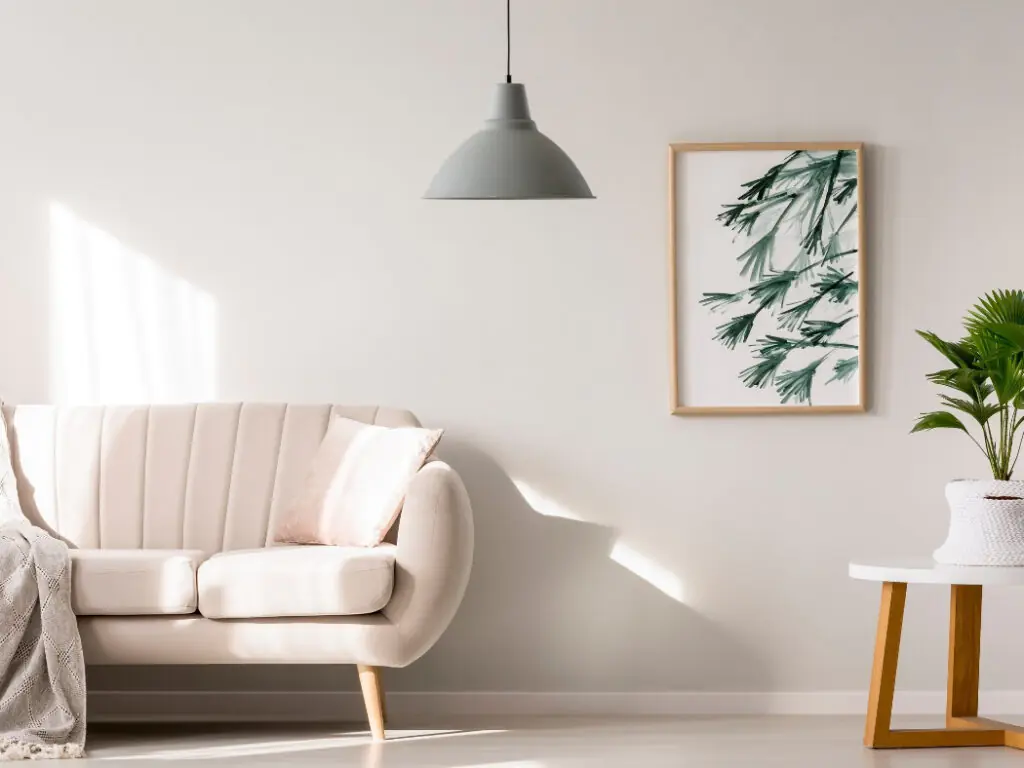
A minimalist design is, simply put, a design that does not include any or many extraneous details. This doesn’t mean it’s lacking in character – minimalist designs can be very intricate and beautiful! In fact, minimalist home designers often use less expensive materials to show how good they are at creating beauty using fewer resources.
And you know me, I love a good bargain!
Key Minimalist Interior Design Concepts
Less Stuff = Better Decor
Again, a minimalist design is not about lack of stuff, it’s about what you choose to include
Maximizing space by using furniture that serves multiple purposes and storing items in hidden areas.
Reducing clutter helps a minimalist home feel larger than how the specific measurements might suggest. It also makes rooms seem more open and less cluttered which simplifies your decorating options – too much stuff can make designing a room confusing or overwhelming!
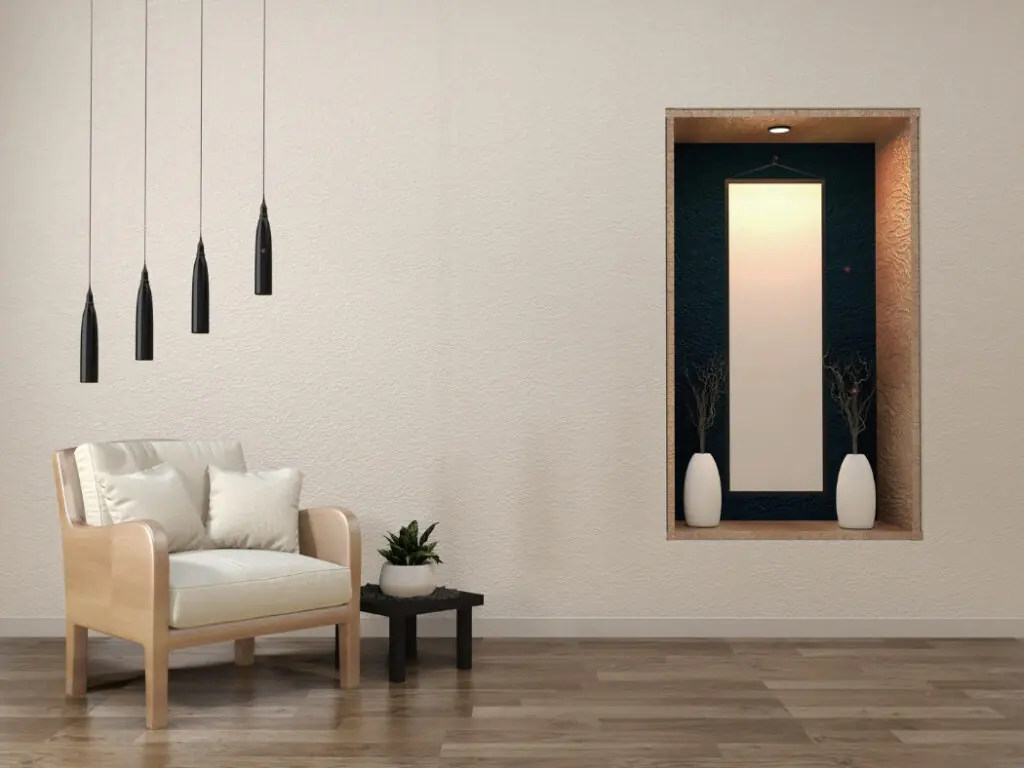
Have you ever noticed that an empty room always looks smaller than it really is? I discovered this fact during the many times I was house hunting. You’d look at an empty living room and think “there’s no way m furniture will fit in that space!” but when you actually measure it out, that room turns out to be about 10% larger than your current living room.
The same can be said for the reverse. A room over-packed with everything possible always looks smaller.
The less clutter, the more space you have to live in. This minimalist design is achieved with items that are multi-functional (a lamp could be used as a table for example) or through decorative accents like plants on shelves or artwork instead of knickknacks. The elements must also coordinate together so they don’t compete: think wood tones, blues & grays rather than reds and pinks!
Less Color Choices
Stay true to one color palette for an entire space with accents of other colors sparingly used as bold statements or pops of color; this will create cohesion within the space. There should be no more than three colors – or at the most four – used throughout your house. That way there isn’t any confusion about which room you are in when stepping out of bed into an open area as well as reduced visual exhaustion from looking around too many different shades.
A minimalist color palette tends to be much simpler than most other decor schemes. There are so many choices, but it’s important to limit how many you use inside your home. When picking a minimalist color scheme for the interior of your house, choose colors that work well together and can create contrast between different spaces in order to make them feel distinct from one another.

Minimalist homes can be created with colors that are easy on your eyes and calming. Colors like green, blue, gray, and white work well in minimalist spaces. The key is finding a color scheme that works for you and getting rid of anything else!
Green is usually associated with nature or freshness which makes it perfect when paired with more neutral tones like cream or white.
Gray has been popularized as an “it” color right now because it looks good on nearly everyone and seems timeless despite being relatively new as a trend.
Blue is often seen by people as peaceful and calming, making blue walls great for minimalist bedrooms.
Minimalist Home Decor Pieces
Make sure furniture pieces flow from room to room; this will create an open feel when moving about your home while also giving it some character at each turn.
In minimalist interiors, you won’t find paintings on every wall or sculptures and decorative pieces filling up the corners of your living room. Think wood tones, blues & grays rather than reds and pinks! A minimalist interior should only have a few color choices; stay true to one color palette for an entire space with accents of other colors sparingly used as bold statements or pops of color- this will create cohesion within the space.
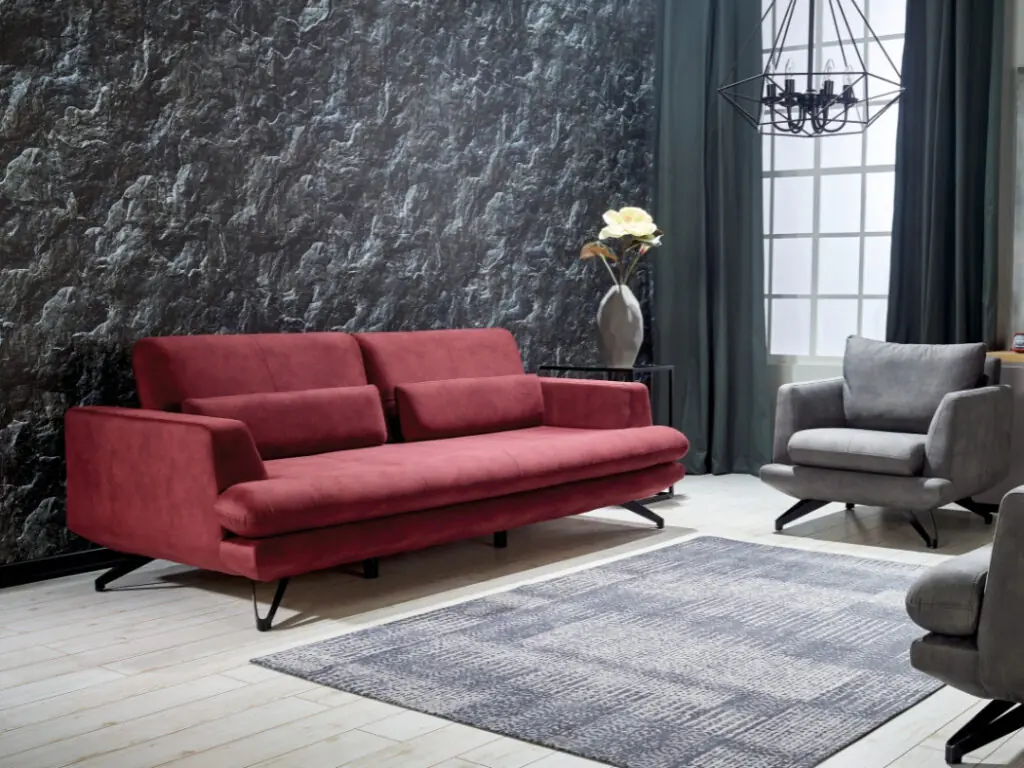
Minimalist home decor doesn’t need loads of furniture to fill it in either; instead use natural materials like wood floors, stone counters, bamboo cabinets, etc., because they’re durable (and easier) when your tastes change and make sure furniture pieces flow from room to room-this will create an open feeling to the entire room.
When reducing the number of pieces of furniture, make sure they are well-selected and fit together with similar colors or textures. Keep in mind that less is more when it comes to size – large pieces may be overwhelming! If you do decide that you must hold on to some of the larger items for practical reasons, keep them out of sight behind curtains for example so your space isn’t taken over by the pieces.
Natural light & space for air circulation
All minimalist home design starts with the lighting. You might be tempted to go for a dark, moody ambiance but it’s best not to overdo it. A central light source is usually enough and can even be supplemented by some sidelights or lamps that can be dimmed in case you need more light later on. When choosing your sources of light, remember that minimalists love natural light.
Because of this minimalists love for natural illumination, they try to limit the number of electric sources. Of course, that isn’t entirely possible unless one goes to bed at dusk and wakes up at dawn. And, even if that was the case, it could make it difficult for guests who may not follow your same sleeping pattern!
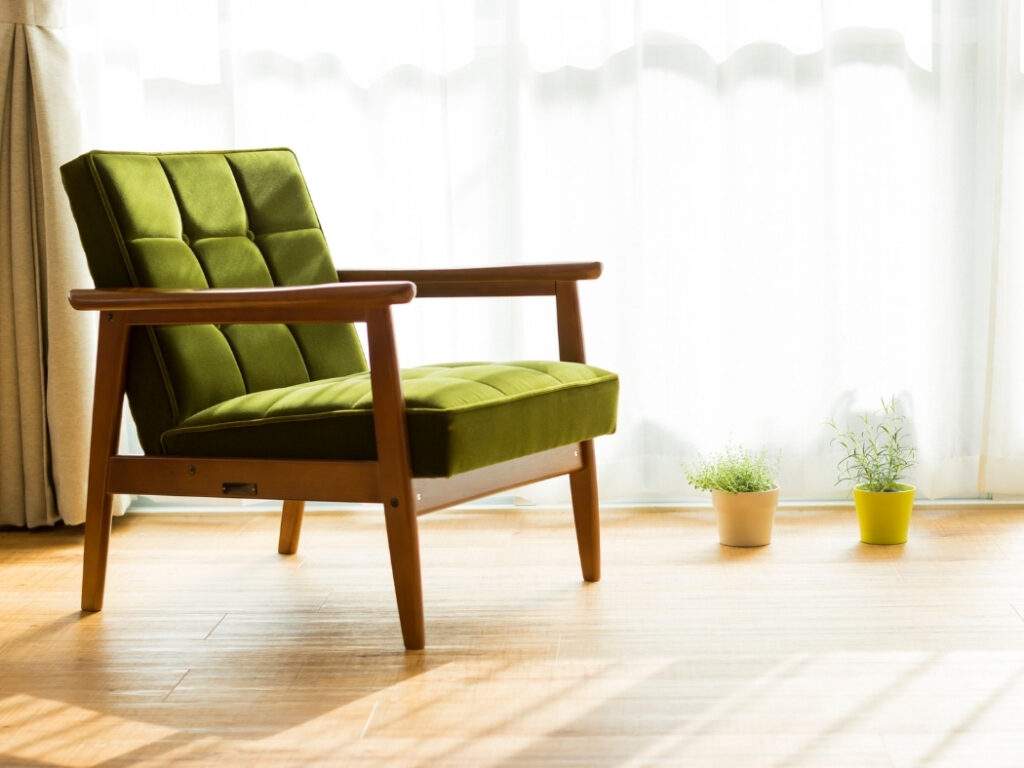
It is important, however, to make sure there are no obstructions such as furniture or heavy curtains blocking out any natural light sources. If the sun is out, and you need to turn on a lamp, you’ve probably violated one of the core principles of minimalist interior design.
Open up rooms by opening windows, keeping window coverings to a minimal (pun intended), and removing unnecessary decorations. This helps the room feel open and airy, which is often the desired impact of minimalist interior design.
Minimalist Decor Is About Making Choices
Minimalist design is about creating a serene environment with just the right minimalist pieces. There are many benefits to minimalist living, including mental clarity and freedom from physical clutter which can lead to higher productivity levels. A minimalistic home also has increased resale value because it’s easier for buyers to imagine themselves in that space than one filled with bumping bookcases or antique furniture.
You may not be able to have everything you want in your minimalist lifestyle, but it’s important to choose the things that bring meaning and value into your life so that they can enrich your everyday life.
The benefits of minimalist interior design make this an easy decision if you’re looking for a relaxing yet stylish living space with low maintenance upkeep. It may take some time and effort to get your desired look since minimalism means less. It’s often harder to take things away from a room than it is to add them. But that is the challenge – and the beauty – of minimalist interior design.
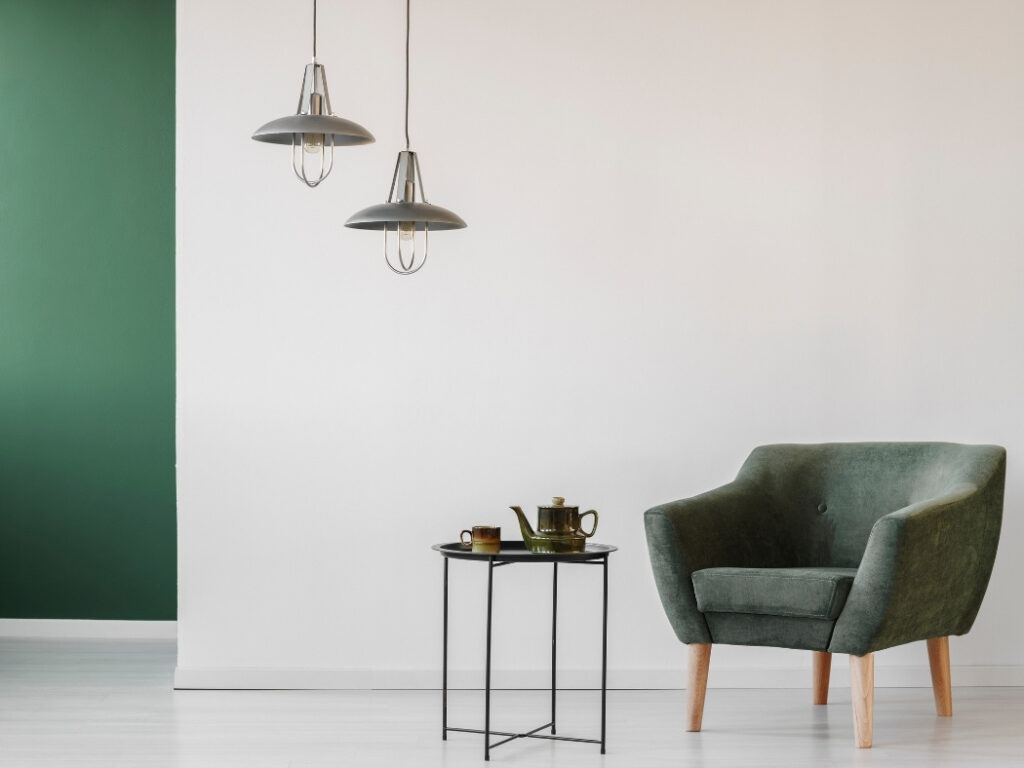 furniture is a great way to create space within the home.” class=”wp-image-368185″/>
furniture is a great way to create space within the home.” class=”wp-image-368185″/>Choosing minimalist furniture is a great way to create space within the home. It’s important that you choose what fits your needs and lifestyle, but there are some things to consider when choosing minimalist pieces:
- Minimalist furniture doesn’t have many ornate details or embellishments.
- The upholstery on minimalist furniture may be soft textiles like velvet or silk rather than leather or heavy fabrics.
- Pieces often feature clean lines with simple curves such as wood chairs with legs instead of arms and couches without cushions for back support.
- You need just enough furniture to stretch out at night after coming home from a hard day at the office. No more. No less.
Plus, having less to clean up every morning and evening gives you more time for that walk around the block or playing with your super-cute puppy. (yes, puppies can easily be included in minimalist home decor).
It is not about getting rid of everything you don’t need – minimalist design means choosing what matters most and then focusing on those few items, using them in different ways, or displaying them differently.
Think outside the box when it comes to furniture: a minimalist living room may feature a tall console table with shelves instead of an armchair; dining chairs can be replaced with stools at the counter; bedroom dressers are swapped out for open bureaus or no storage at all!
For example, a minimalistic kitchen doesn’t have much in terms of appliances either: smaller ovens, microwaves, and blenders take their place alongside just enough plates, dishes, and other cooking utensils to get the job done. Anything else should be hidden or stored away from view.
Use open spaces as an accent to minimalist design. If you’re lucky enough for your home or apartment to have a large, empty wall, then consider using it! Hang framed prints and art on the wall in staggered heights and widths; group together sculptures of varying sizes; place books neatly against one another on a shelf.
Of course, it’s all about balance.
You don’t want to strip everything down so much that your home no longer reflects you or who you are. It’s more about picking the most important pieces to reflect your personality in the boldest, simplest way possible.
I think it’s important for minimalist decor to feel natural and have a sense of identity. When you strip everything down so much that your home no longer reflects who you are, the project can go south real quick.
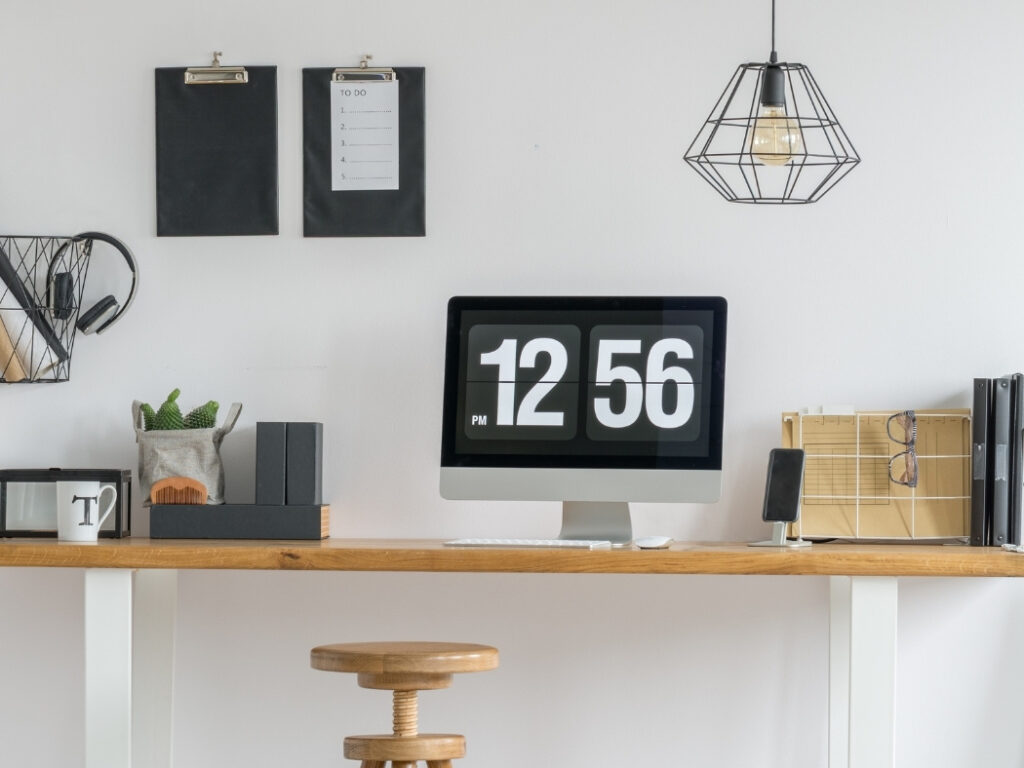
So there you have it – some tips on how to create beautiful minimalist spaces with an eye towards keeping them representative of who we are as individuals:
– Start by selecting only what matters most (you). This means getting rid of anything that doesn’t make you happy or doesn’t reflect your personality in any way. The less clutter there is, the more space will be open up for creativity!
– It might sound scary at first but try not to buy too many new items when starting out because this will just add more things into your minimalist space and make it feel cluttered.
– When you do buy something new, be sure to pick the most important piece that will represent your personality in the simplest way possible because this is what’s going to remind you of who you are when all else fails!
– Keep an open mind about how best to decorate your minimalist spaces so they’re not too monotonous or boring – a perfect balance can get tricky sometimes but as long as there is some kind of focal point (that represents its owner) then everything should work out.
– The key with minimalist interior design is that less really does mean more. Yes, it may seem like an oversimplification at first glance, but if done correctly then minimalism can actually provide a clearer focus on more of the things you love – things that previously got lost in the clutter.
Keep it simple. Keep it minimal. Keep it lovely. That is – of course – easier said than done.
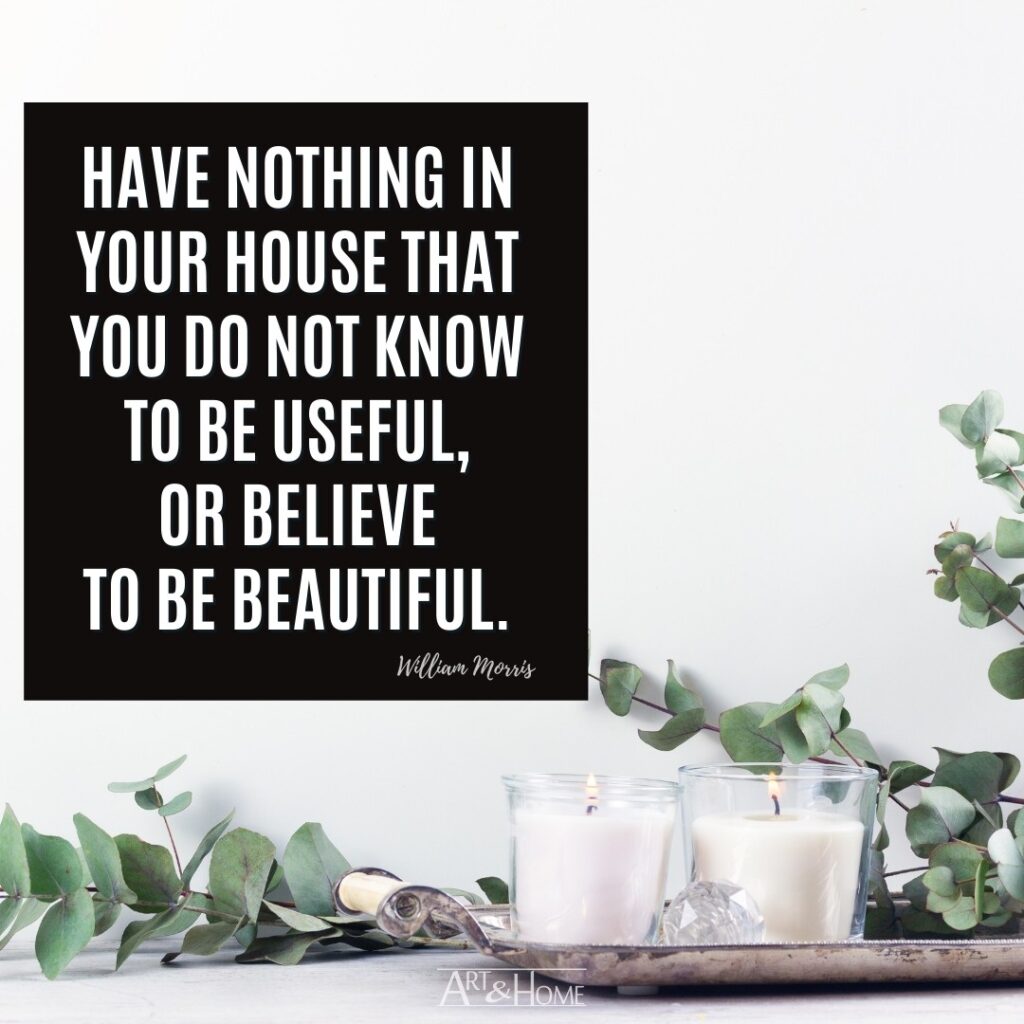


This design article about Minimalist Interior Design is spectacular! You certainly know how to keep a reader entertained. I really enjoyed what you had to say, and more than that, how you presented it. Too cool!
Thanks, Ruth!!! I’m glad you enjoyed it!!!